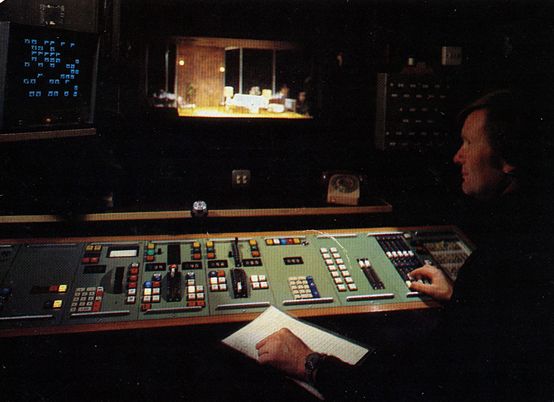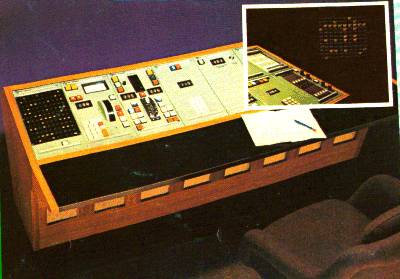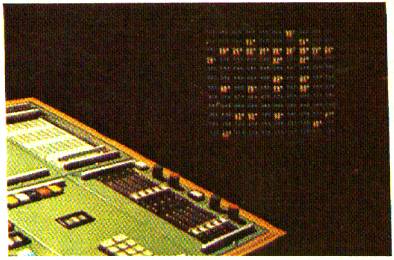|
Introducing
a new
Lighting Control |
|
|
For nearly 60 years Rank Strand Electric have been pioneers in the field of lighting control, initially for the theatre only but for television as well ever since the first two studios at Alexandra Palace in 1936. Even at that date a memory device for storing groups of control channels was available from Strand and this was an important operational feature of various control systems for the next 30 years. With the ever-increasing complexity of stage and studio lighting came the desire for a means of recording precise dimmer intensity levels in order to avoid time-consuming, hand-written plotting and the subsequent resetting of fader levers during the performance. The first generation of dimmer level memory controls, such as Memocard and System MSR, were based upon the principle of adding a memory device to a more or less conventional fader lever control; for acceptable control facilities this involved an expensive mixture of digital and analogue control circuitry and the necessity to match the manual fader to the output of the memory if a modification of intensity level was required.
|
The second generation of dimmer memory controls, such as System DDM and the new Modular Memory System, take full advantage of the latest computer technology to provide far superior operational facilities. For example, the System DDM, installed at Stratford-upon-Avon and others in Australia and North America, is based upon software for a standard mini-computer which allows any degree of sophisticated facility to be programmed in, and indeed re-programmed if future artistic styles demand different facilities from the lighting control The Modular Memory System, MMS, now being introduced is also unique in at least three different ways. The first feature is its price; in its basic form it is available for under half the price of previous dimmer memory systems with comparable facilities. A dimmer memory control is now a practical proposition for all theatres and studios, no longer the dream that once it was for many users. The second unique feature is its modular construction; a series of compatible, self-contained modules providing both complementary and alternative control facilities all of which plug into a common data-link. Control facilities can always be extended, or different ones substituted, at a later date. The final unique feature is the incorporation, in two alternative modules, of the digital fader wheel which has the "feel" of a fader lever in that it increases or decreases the intensity level of any control channel according to the amount, the rate, and the direction of movement. Yet it never has to be moved to match the existing intensity level before taking over control. |
|
Choice of Modules The
control facilities provided by a Rank Strand Modular Memory System depend entirely
on the choice of modules. The number of channels controlled can vary from 60 to
480. Many of the facility modules can be duplicated if required; for example two
Playback Modules for fade within fade facilities, or two Core Store Modules for
additional storage capacity, or two Channel Control Modules for dual operation.
In addition, there are optional modules, and optional additional facilities available
on some of the basic modules.
|
|||||||||||||||||||||||||||||||

 |
|
 |
 |
|